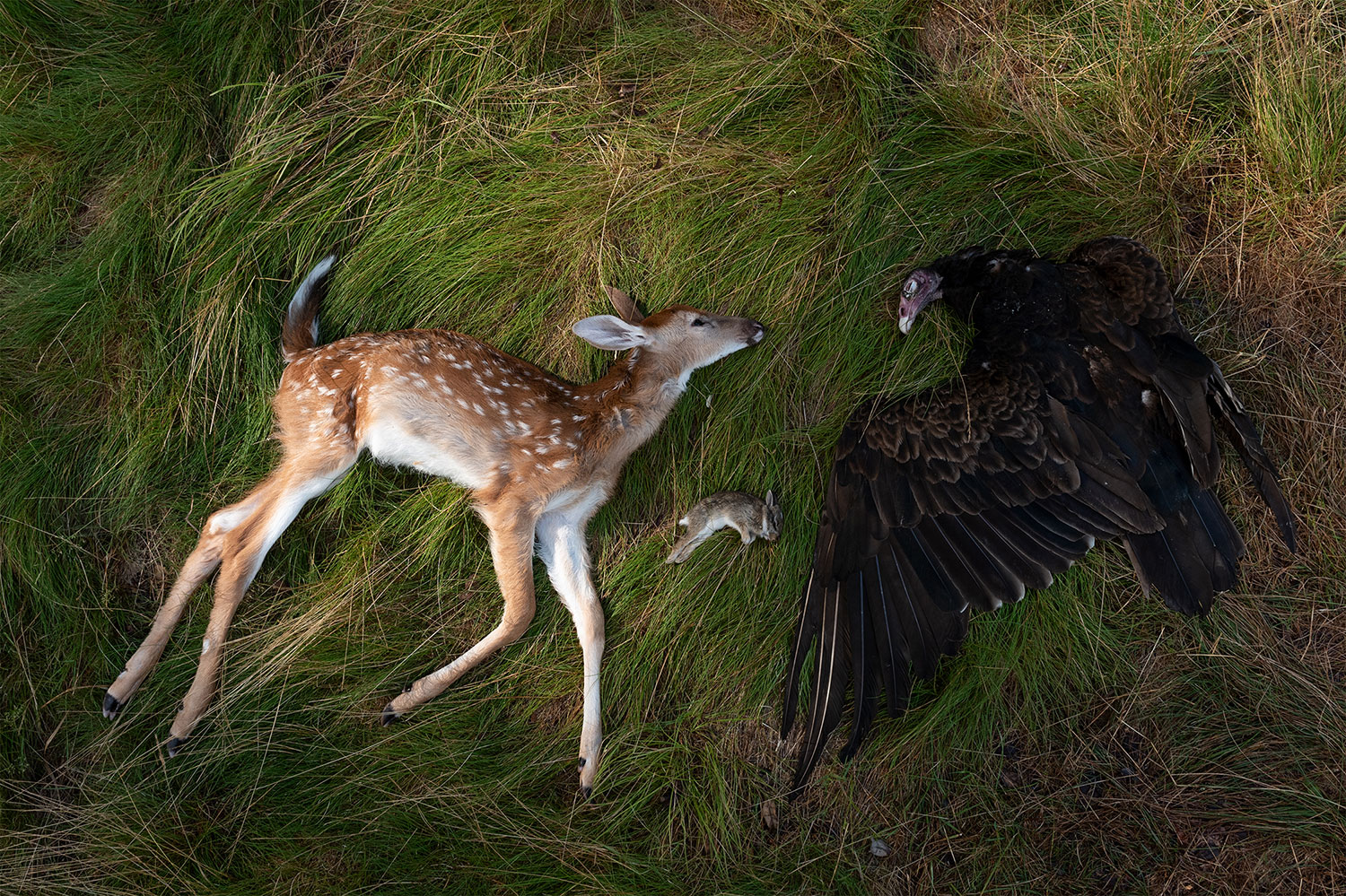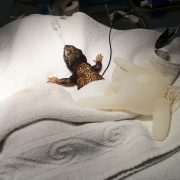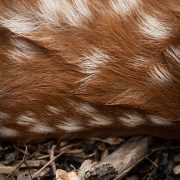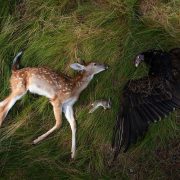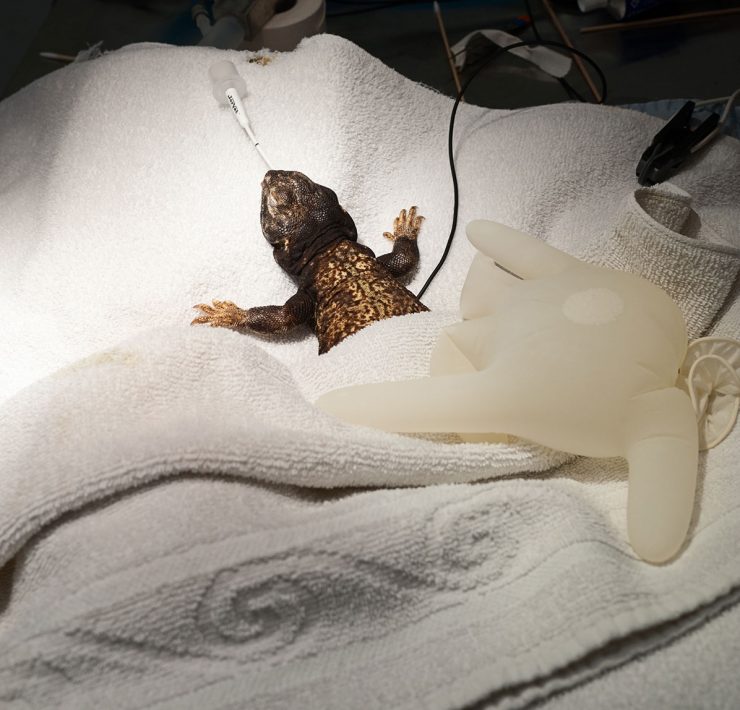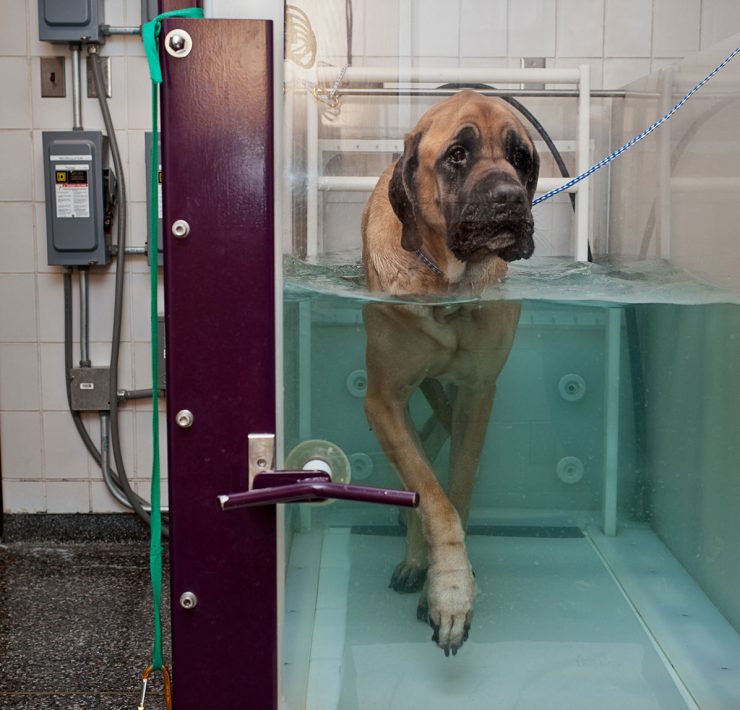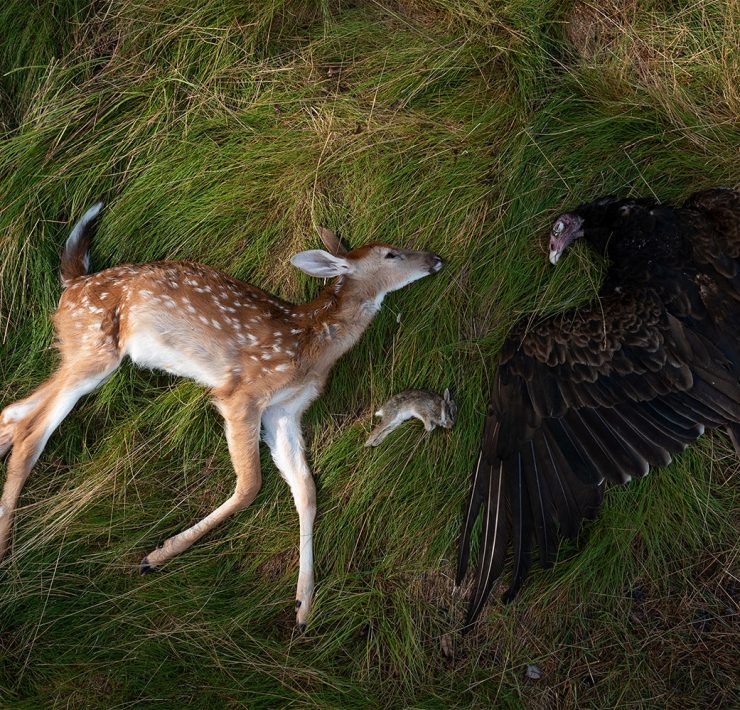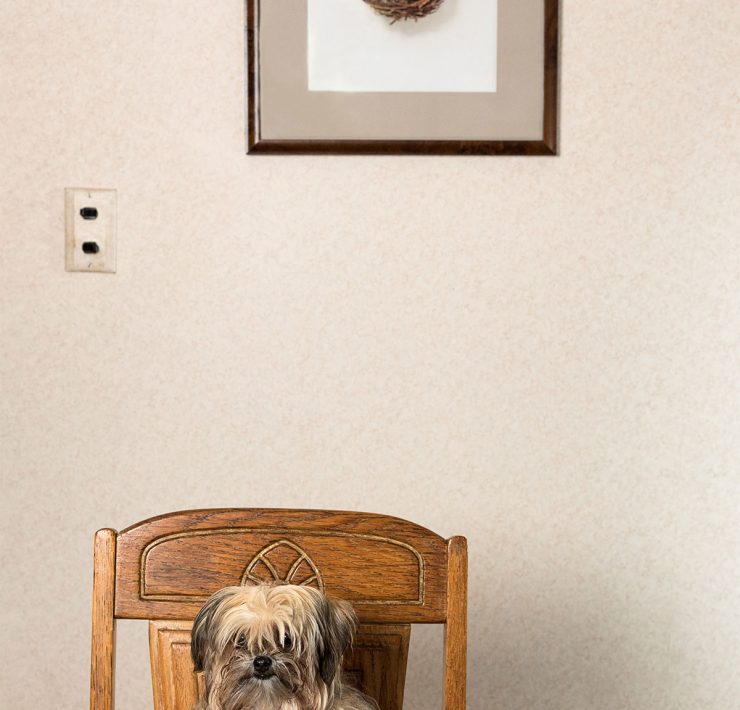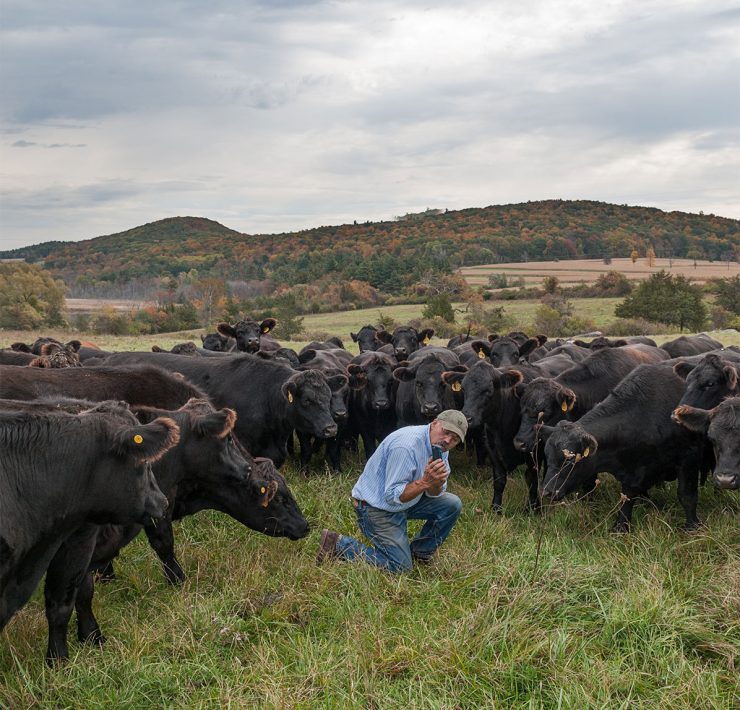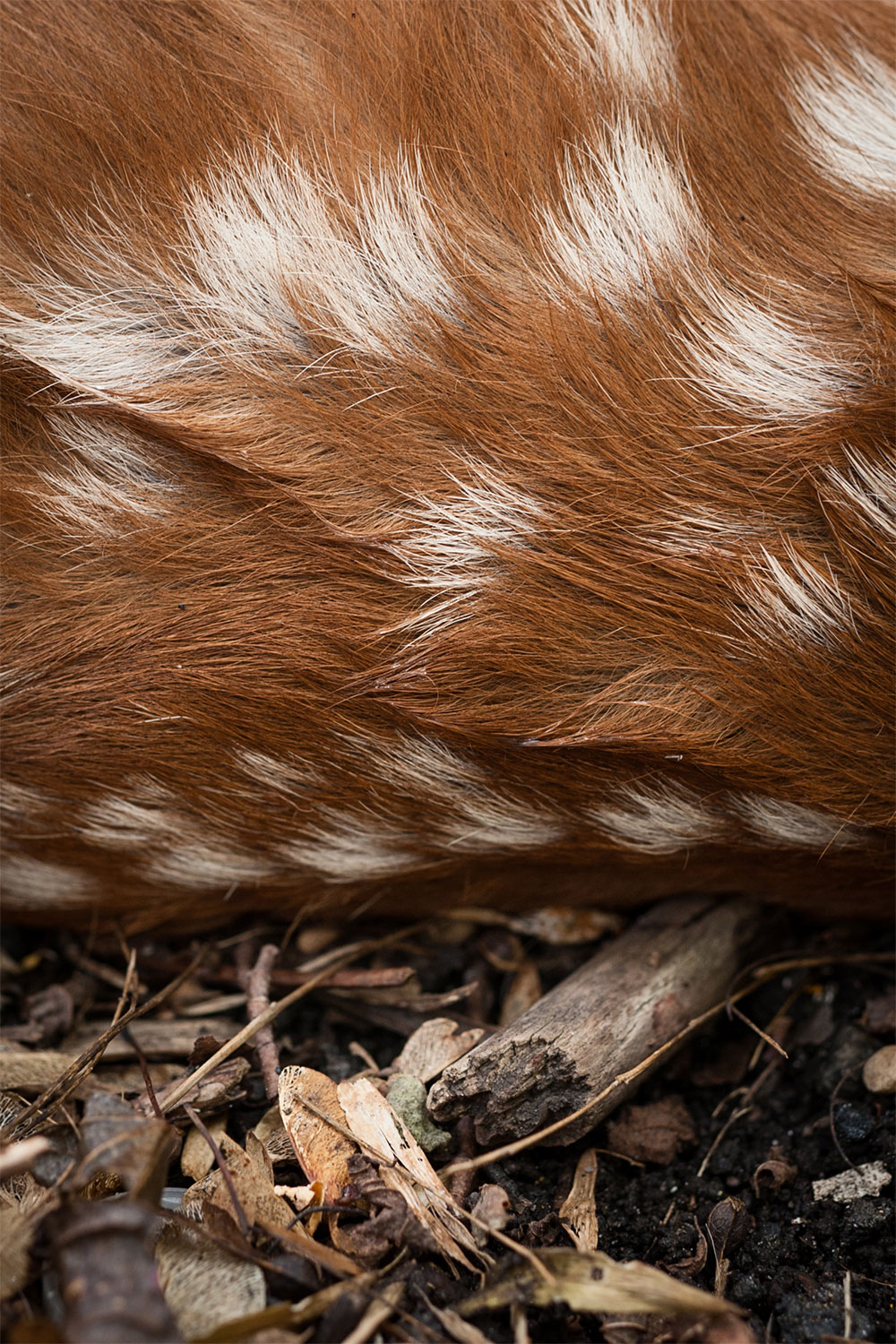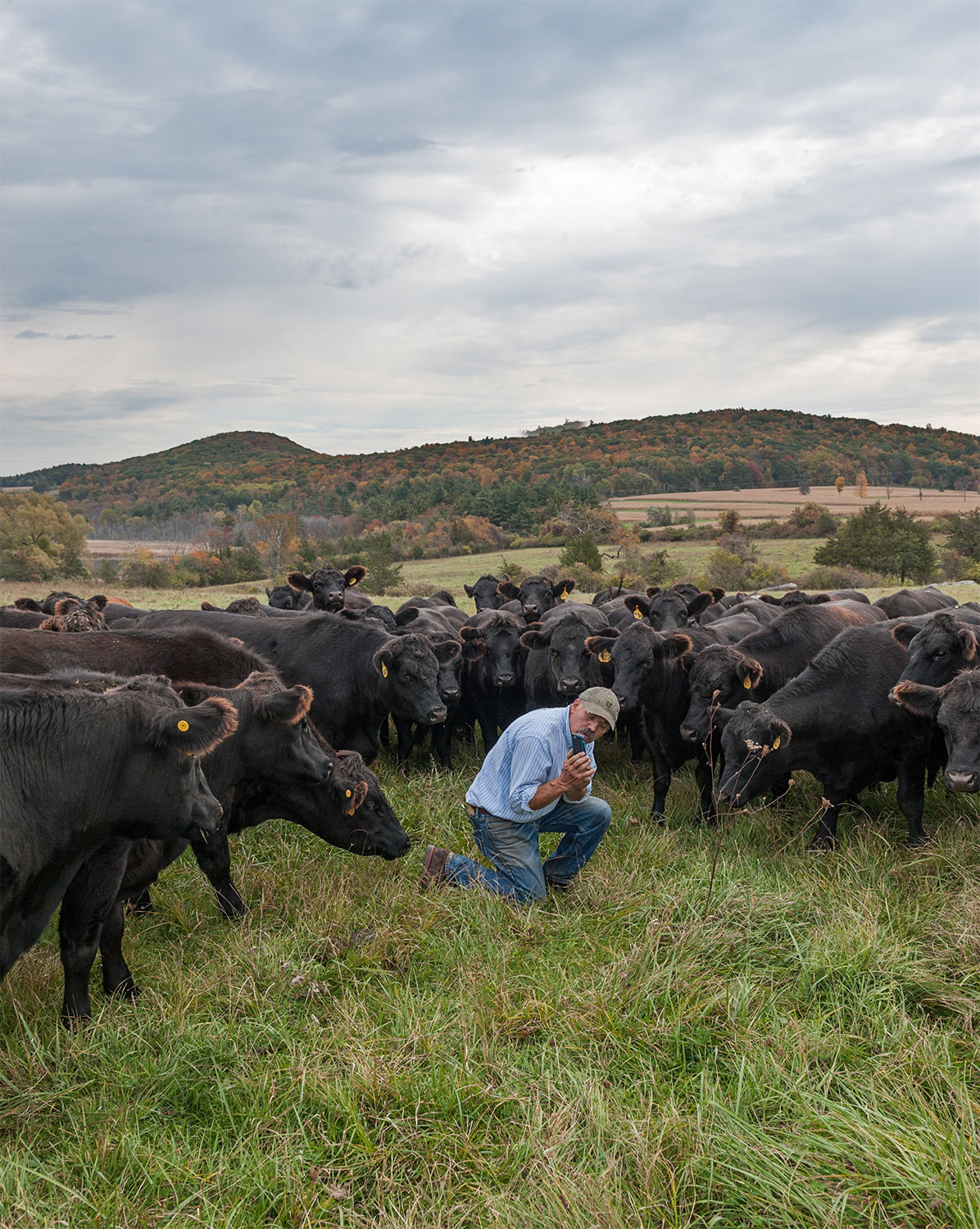“You Hear All the Time, Animals Have No Voice. It’s True.”: Linda Kuo on Portraying Wildlife
“You Hear All the Time, Animals Have No Voice. It’s True.”: Linda Kuo on Portraying Wildlife
“You Hear All the Time, Animals Have No Voice. It’s True.”: Linda Kuo on Portraying Wildlife
“You Hear All the Time, Animals Have No Voice. It’s True.”: Linda Kuo on Portraying Wildlife
“You Hear All the Time, Animals Have No Voice. It’s True.”: Linda Kuo on Portraying Wildlife
“You Hear All the Time, Animals Have No Voice. It’s True.”: Linda Kuo on Portraying Wildlife
Linda Kuo’s photographs exhibit resilience, adaptation, and the unsung struggles of domesticated and wild animals under contemporary conditions.
Presented through a stark, minimalist lens that at times strikes a whimsical tone, as in her series “Giving Grace”, where dogs at a dinner table, like the mop-headed Clarisse, a Yorkie chihuahua, aka Muppet, are given first fiddle, Linda’s photographs — even when at their most playful — possess an abiding sympathy for the vulnerability and marginalization of animals. In the case of the English Mastiff diagnosed with cancer, swimming in a tank at his weekly hydrotherapy session in the series “Clinical Hope”, or in the July 20, 2021, New York Times photo essay “Caring for the Wildlife that Stray into the Suburbs,” Linda’s subtle precision, almost clinically forged, invites many thought-provoking ethical and ecological questions.
In this ranging interview, Linda highlights the social apathy that often accompanies cruel and indifferent practices towards animals. “Jason,” Linda states with a defiant edge, “I think the activist part of me is, if I’m getting bullied, I can take that, but I cannot stand it if it’s happening to somebody else. And I think that’s just directly correlated with my experience growing up.”
Whether the subject matter is a red-tailed hawk with paralysis resulting from the West Nile virus or a brown mottled barred owl poisoned by lawn chemicals, or in her series “Reclaimed,” where she examines the practice of deer composting performed by the Department of Transportation, Linda’s eye methodically lingers on critical information pointing to the unintended consequences of local and global practices of animal cruelty and neglect.
The daughter of immigrants who fled China soon after the Communist takeover in 1949, Linda Kuo grew up middle class in the twin cities of Champaign-Urbana, Illinois. As the only Asian family on her block, it was not uncommon, she says, for the boys in school to rip out the barrettes in her hair, to punch and harass her, while teachers turned a blind eye. “One Halloween,” she tells me in a soft voice pained by the memory of indifference, “we had a hate crime on our house…my dad had a pool put in and they put soap in the pool, which kills the filter. They razor-bladed all our new windows and wrote racial slurs on our house.”
Reflecting on the spate of recent attacks, (74% of Asian American and Pacific Islander Women, according to the Asian American Foundation, have been the subject of racism or discrimination in the past year), Linda expressed fears for the future of Asian Americans. Although aware of the difficulties that members of the Asian community, threading a needle in a democracy that has repeatedly exploited cheap Chinese labor as far back as the nineteenth-century construction of the transcontinental railroad, she remarks that “it’s the whole thing that’s going on now with Asians [as a] model minority. [My parents] would just keep their head down and work and not make waves.”
Linda insists that no artist escapes subjectivity and that what she believes she brings to her photography is a spiritual connection with her subjects, one that turns the heroic battle for survival into a philosophical meditation on our responsibility to a world, often callously fitted to animal welfare.
This interview spotlights the intersection between art and ecology in commemoration of Earth Day’s 52 Anniversary on April 22, 2022.
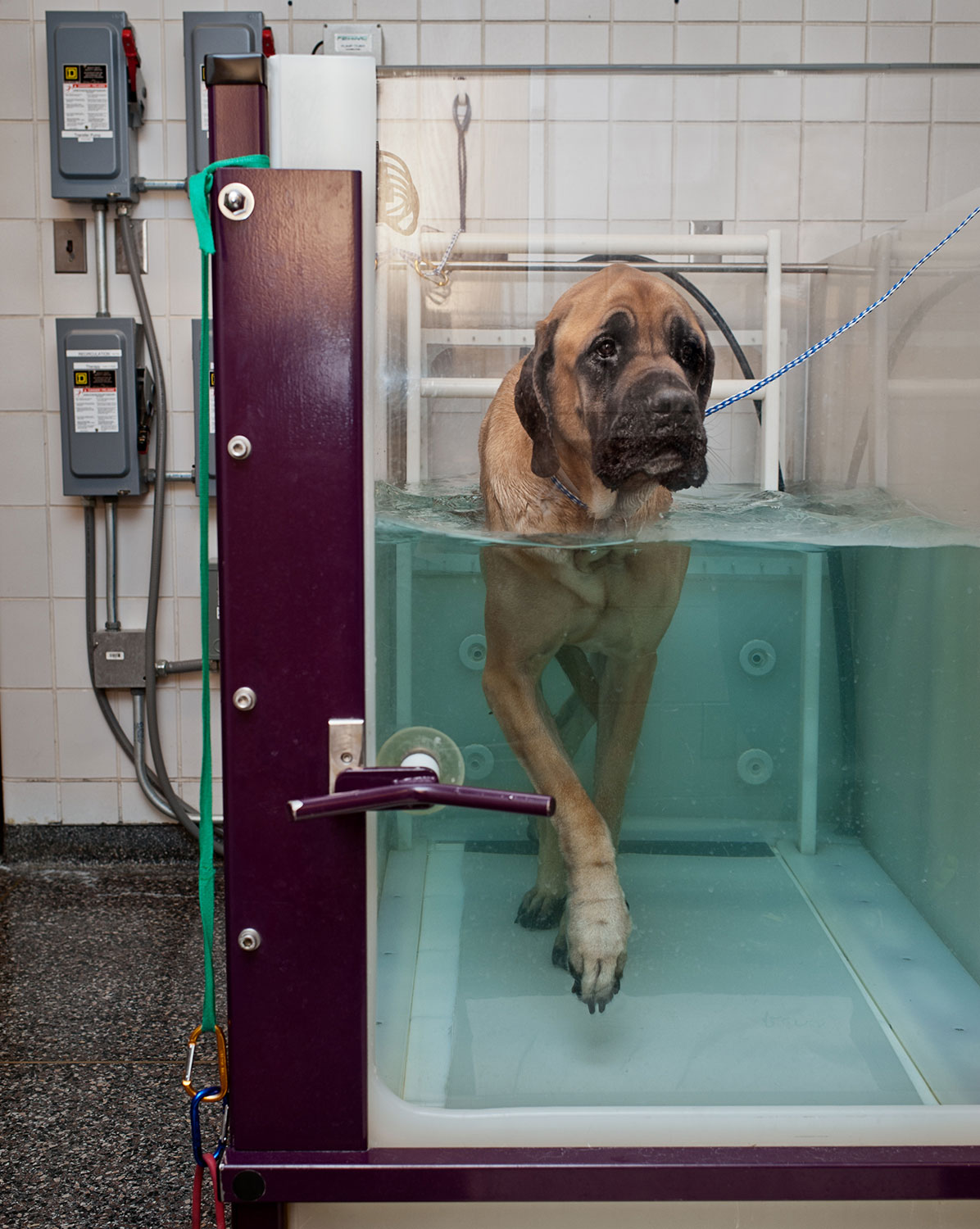
The Daring: Hi, Linda, to start off, how did the pandemic change the way you make pictures?
Linda Kuo: For me, and for a lot of photographers, they say that your soul is what’s communicated in the image on the other side, and that’s maybe not true for all photographers, it depends. Surely if you’re in it for commercial reasons, it’s different than when people do project work, whether it’s photo-journaling or documentary work.
A lot of my style of shooting has evolved and is the way that it is for very specific psychological and emotional reasons. I lost my dad in 2012. He was battling bone cancer for a long time. And just in general, outside of that, within that very short period of me losing him, I lost the most important people to me in my life. [This included close friends, and, more recently, Linda’s mother, who passed away at the end of 2021]. I was way overwhelmed [during the pandemic] where I didn’t feel I could handle a lot.
TD: Right—
LK: My bandwidth and tolerance for things, in general, were shortened. So I started to edit a lot, and I don’t feel I have a lot of belongings and things, it’s kind of the Marie Kondo philosophy, ‘just have the few things that you have that bring you joy, that are important to you.’ And even now, as I declutter, I still feel I have too much clutter.
Maybe that’s why I shoot the way that I do, that it’s very minimal, clean and there’s not a lot…even though there’s a lot going on content-wise. I never really saw my work that way because sometimes you’re too close to it, but a friend of mine who’s on top of the fine art food chain said, “You’re stuck, your pictures are really exacting and they’re really perfect.” And I go, “What do you mean by that?” And he doesn’t mean it’s the perfect image, he means they’re just very clean, compositionally, within the image itself.
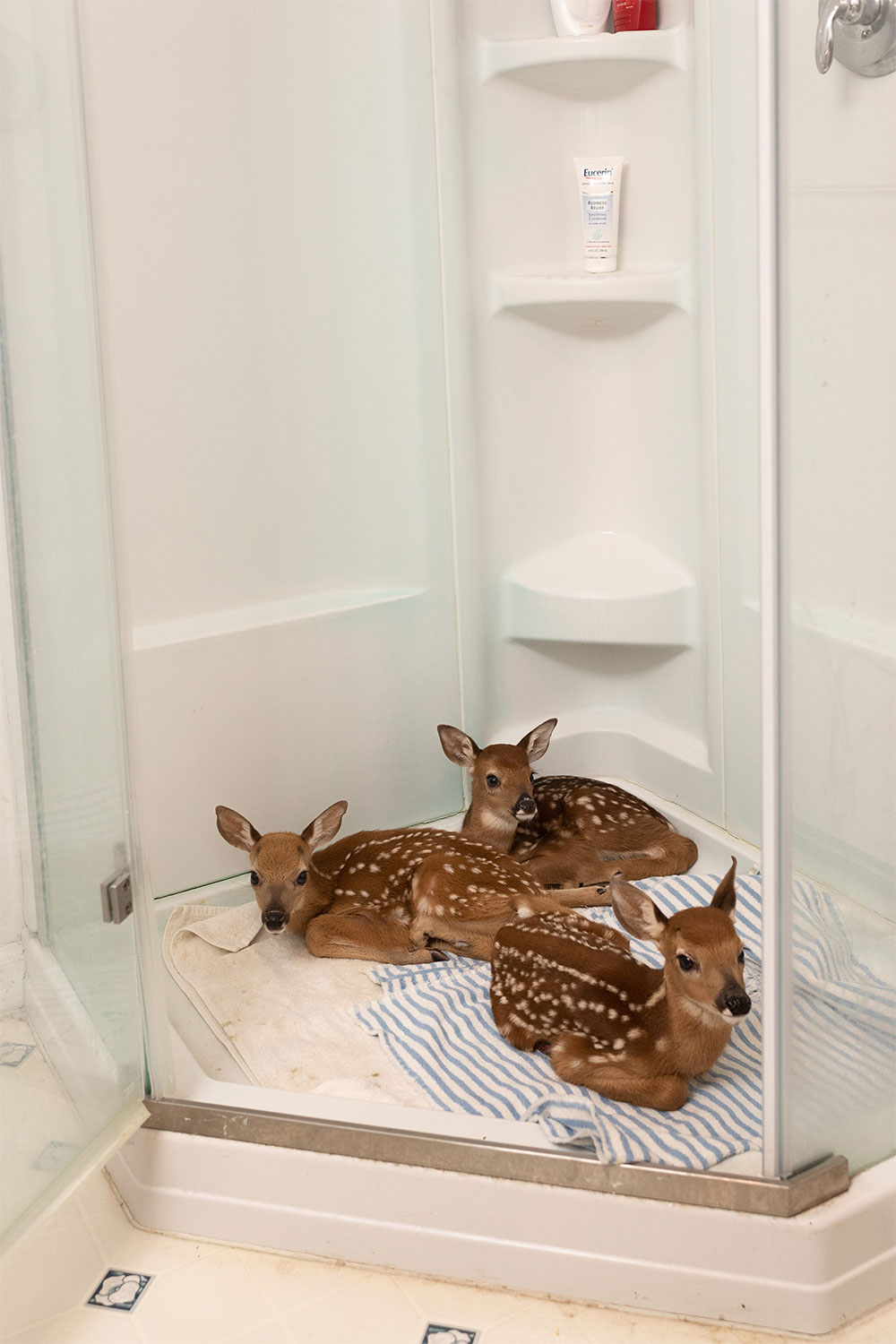
TD: What do you think about wild animals now roaming our backyards?
LK: Where I live, everyone likes to post pictures of the owl in the tree or the fox in their backyard, but they want a perfectly green lawn. I have weeds in my lawn because I don’t use pesticides, but people here want manicured lawns. So I have a picture of a barred owl who’s dying because it had pesticide poisoning because people want a green lawn…
If you look at my project Hit and Run, people are like, “This fawn’s been left alone, we’re going to go take it and bring it to this nonprofit,” but the mom’s foraging and she leaves her fawn purposely in the woods because it’s got spots on it, which is supposed to mimic deckled sunlight. She knows exactly where she left it and she will come back for it. People are well-meaning but they don’t know, or there are hunters here, or they get hit by cars.
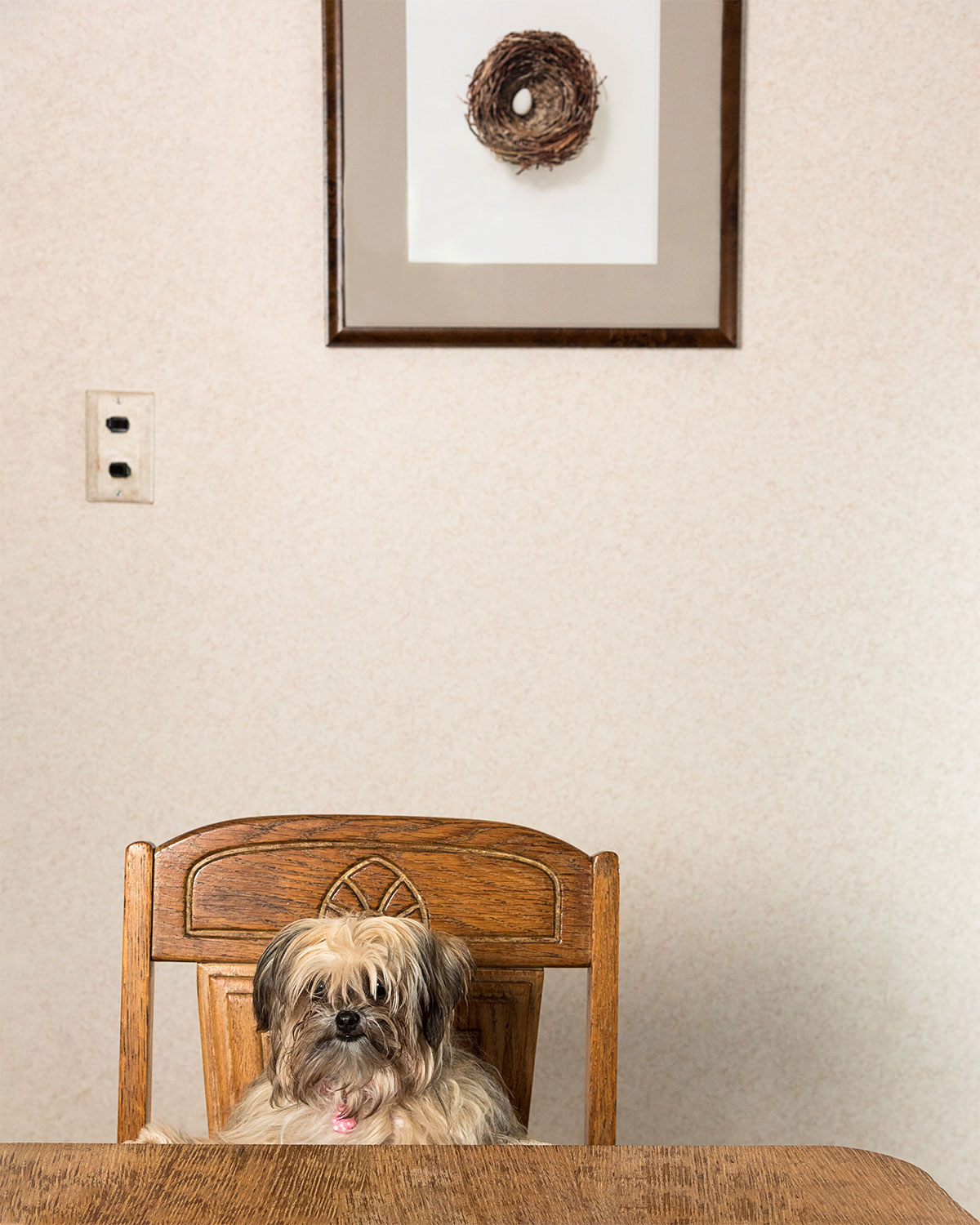
TD: I was wondering, do you ever have to take a gut check with respect to bias when approaching your subjects, or do you not have to deal with that because they’re animals?
LK: Even when I was in Europe (in a former life, Linda was an international runway model) they would be like, “I don’t know if you heard about the designer Givenchy” and I always thought, “Okay, I know I can work for him. I see myself in his show.” And my agent was like, “No, he doesn’t care for Asians.” And I go, “Why is that?” And he goes, “He thinks they’re too reserved.” And I go, okay, I get that because that’s our stereotype and it’s true. And I said, “But I’m American-Asian…and I think that’s a little different.” I said, “I don’t care if they slam the door on my face. I just want them to reject me.”…They see [Asians] as just a marketing tool.
Even though Europe was much more welcoming, there was still that token thing. There was always a feeling of having to fight for your voice…And so I think that’s what really draws me to animals because they have no voice. I mean, you hear that all the time, animals have no voice. It’s true. They can’t choose for themselves…They can’t do anything for themselves… Even with their own habitat, even in captivity as pets, they’re just completely controlled all the time. I think that resonates with me personally, having your choices made for you.
TD: With animals, is it possible to tinker around the edges a little bit to evoke a certain expression?
LK: Okay, are you asking me, am I able to be objective when I’m taking an image of an animal, or am I capturing it in a way that I think it’s feeling, or that I want other people to think that it’s feeling?
TD: Yeah, we have so many moods, different ways that the camera captures us. I don’t know if you have some thoughts on what it might mean to wait for the right moment to capture an animal and its expression. How do you do that?
LK: I will actually pass on shots, and sometimes if something traumatic is happening, I will not only put my camera down even if I think I could get a great shot, I’ll actually leave the room because they need to do what they need to do (as in her series on medical treatments for exotic pets, Displaced). And, so, first and paramount for me with my project is trust. I truly believe that the universe will give me the images that I want for my story. And that there are many times I’ve shown up and come away with nothing but it’s because I’m so dedicated to [animals] and what their purpose is that that’s okay with me…Sometimes I don’t have the option to really wait for the animal to do something or not. But I think that my images come out the way they do because when I’m shooting, I’m feeling a connection with the animal and whatever I think it’s experiencing.
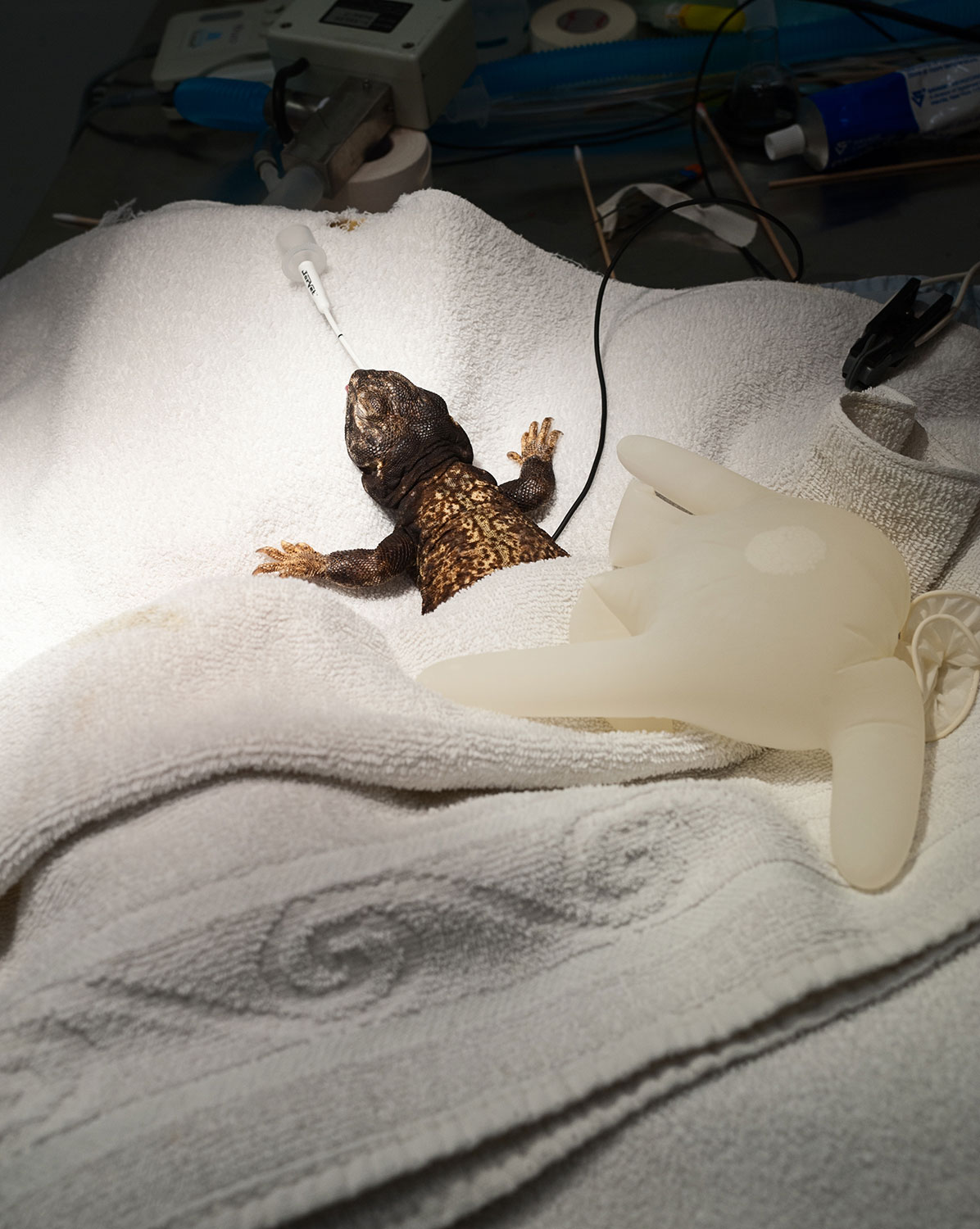
TD: I think you’re saying maybe that you approach images like your series on dead and injured animals in Hit and Run differently. I understand that you don’t want to exploit or expose anything there, but how do you approach that image differently than, say, the farmer out in the field with his happy cows?
LK: That’s about Animal Welfare Approved farms so those animals have the best life they can have before they end up on your plate. I want to photograph them really happy in the pasture and having a great life, taking a nap in the field, watching the sun come up and it’s not hard because they are having that life, but I definitely want to convey that. My purpose is so people will be like, “Oh well, this is how animals should be living. If they end up on your plate at least they had the best life until the end.”
TD: But in your series, Displaced, the exotic animals you photograph are dealing with tremendous suffering and stress. How do you remain objective?
LK: They have very highly specialized requirements. So I can’t tell you how hard that project was for me, how many animals that came in that were just dying because someone didn’t change the light bulb in their turtle tank because the light bulb’s sixty bucks and they didn’t want to pay for it, or they didn’t know. So the turtle got shell rot and it died right there in front of me. Or a woman brought a chinchilla, and she goes, “This is my third time bringing it in, it’s so expensive and if he tells me something’s wrong, then I’m just leaving her. I’m just going to dump it at a shelter.” She just said that to me, and I have to remain completely neutral, because it’s not my place to interfere.
TD: I’m really struck by the euthanized image that you have in It Takes a Village. How did that come about where you have a deer, cottontail rabbit, and a turkey vulture lying next to one another? I mean, the image is wild.
LK: How that one came about is that I went to visit Patrick at Animal Nation, and he recently had to euthanize these animals, which is heartbreaking. I couldn’t make my caption too long, but the fawn’s mother got hit by a car and the fawn got hit by the same car. But since its nose was broken, it couldn’t suckle to eat so they had to euthanize it. And I said, “Do we have it here?” And he said, “Yeah.” And he goes, “I have this cottontail bunny and this turkey vulture.”
I put them together because people don’t like turkey vultures, they think they’re ugly and they don’t really care about them. But I purposely had that in there with the little bunny, which everybody likes; right? And the fawn because everyone likes Bambi because I wanted compassion. And also the cottontail bunny was killed by a pet, so the message is ‘take care of your pets’.
This conversation has been edited and condensed for clarity.
Linda Kuo’s work has been featured in The New York Times, The Sunday London Times Magazine, Slate, German Geo, and Photograph. Her photography has been exhibited at the Philadelphia Photo Arts Center, The Center for Fine Art Photography, and the Biennial of Fine Art & Documentary in Barcelona, among other national and international competitions. She has received awards from Juliet Margaret Cameron, the Center for Fine Art Photography, and the Biennial of Fine Art & Documentary. Visit kuophoto.com


